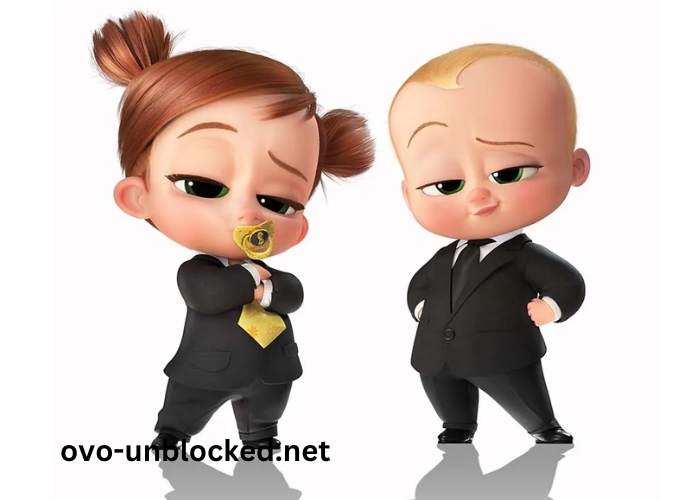The Boss Baby: Family Business is the highly anticipated sequel to the original animated film,The Boss Baby, which introduced audiences to the unique and humorous world of business-minded infants. Released in July 2021, this film continues the story of the Templeton brothers, Tim and Ted, as they navigate the challenges of adulthood while still managing their inner child. The sequel expands upon the charming blend of comedy and heartfelt moments that made the first film a success.
This blog post will delve into the various aspects ofThe Boss Baby: Family Business, including its plot, character development, themes, and the impact it has had on its audience. By examining these elements, we can gain a deeper appreciation for the film’s contribution to the animated genre and its relevance to both children and adults.
What Is the Plot of The Boss Baby: Family Business?
The Boss Baby: Family Business picks up several years after the events of the first film. Tim Templeton, now a devoted family man, is juggling the responsibilities of parenting his two daughters while also dealing with the demands of his adult life. His brother Ted Templeton, on the other hand, has become a successful CEO and is consumed by his work. The film opens with Tim reminiscing about the past, wishing he could relive the adventures of their childhood.
The narrative takes a turn when the two brothers are unexpectedly reunited. Tim discovers that his daughter, who possesses a unique ability to communicate with babies, is embroiled in a plot that threatens the stability of the family. To confront this challenge, Tim and Ted are transformed back into their baby forms, allowing them to tap into their youthful energy and creativity. This transformation is not just a physical change but also serves as a metaphor for reconnecting with their childhood selves and understanding the importance of family bonds.
As they navigate this new adventure, the brothers must work together to outsmart the villain, a cunning new baby character namedWolfgang, who seeks to disrupt the harmony of the family and take over the business of baby products. Through their journey, they learn valuable lessons about family, responsibility, and the importance of nurturing their relationships.
How Do the Characters Evolve in The Boss Baby: Family Business?
One of the most intriguing aspects ofThe Boss Baby: Family Business is the character development of Tim and Ted Templeton. In the first film, Tim was portrayed as a reluctant participant in the world of babies, often feeling overshadowed by his younger brother, Ted. However, in this sequel, Tim has grown into a responsible father, showcasing his maturity while still embracing the playful side of his character.
Ted, who has achieved great success in his career, grapples with the realization that his work-centric lifestyle has distanced him from his family. This internal conflict drives his character arc, as he must confront his priorities and recognize the importance of being present for his children. The transformation back into baby form serves as a catalyst for both brothers to revisit their childhood, allowing them to reconnect not only with each other but also with their own families.
What Themes Are Explored in The Boss Baby: Family Business?
At its core,The Boss Baby: Family Business explores several themes that resonate with audiences of all ages. One prominent theme is the concept of family. The film emphasizes the importance of familial connections and the sacrifices that parents make for their children. Through the journey of Tim and Ted, viewers are reminded of the significance of nurturing relationships, even amidst the chaos of life.
Another key theme is the balance between work and family life. The film portrays the struggle many parents face in prioritizing their careers while ensuring they remain present for their children. Ted’s character arc serves as a poignant reminder that success is not solely defined by professional achievements, but by the love and support one provides to their family. This theme is particularly relevant in today’s fast-paced world, where the boundaries between work and personal life often blur.
How Is the Animation Style in The Boss Baby: Family Business?
The animation style inThe Boss Baby: Family Business retains the distinctive aesthetic of its predecessor while introducing new visual elements that enhance the storytelling experience. The film employs a vibrant color palette and dynamic character designs that bring the characters to life in a whimsical way. The baby characters, with their exaggerated features and expressive faces, add a layer of humor and charm that appeals to viewers of all ages.
One notable aspect of the animation is the use of fluid motion during action sequences. The chase scenes and comedic moments are depicted with a lively energy that keeps audiences engaged. Additionally, the film incorporates creative visual gags and imaginative settings, further immersing viewers in the fantastical world of babies and their business endeavors.
The attention to detail in the animation also enhances character development. Subtle facial expressions and body language convey emotions effectively, allowing audiences to connect with the characters on a deeper level. This emotional resonance is crucial in a family film, as it fosters empathy and understanding among viewers.
What Reception Did The Boss Baby: Family Business Receive from Critics and Audiences?
Upon its release,The Boss Baby: Family Business garnered mixed reviews from critics, though it generally resonated well with family audiences. Critics praised the film for its humor and engaging storyline, noting that it successfully maintained the charm of the original while introducing new elements. The comedic timing and voice performances, particularly from returning cast members like Alec Baldwin (as Boss Baby) and James Marsden (as Tim), were highlighted as standout features.
However, some critics pointed out that the film’s plot felt predictable at times, relying on familiar tropes and formulas typical of animated sequels. While these critiques noted a lack of originality, family audiences appreciated the film’s light-hearted approach and its focus on familial bonds, making it an enjoyable watch for children and parents alike.
In terms of box office performance,The Boss Baby: Family Business performed well, appealing to families seeking entertainment during its release. Its success further solidified the franchise’s popularity and its position within the animated film landscape.
How Does The Boss Baby: Family Business Connect to Its Predecessor?
The Boss Baby: Family Business serves as both a continuation and expansion of the original film’s narrative. By retaining key characters and building upon their development, the sequel allows for a seamless transition from the first installment. Fans of the original will appreciate the callbacks to familiar scenes and references, creating a sense of nostalgia while also introducing new adventures.
The film further explores the concept of sibling dynamics, which was a central theme in the first movie. The relationship between Tim and Ted evolves throughoutThe Boss Baby: Family Business, showcasing how their bond has matured over the years. This connection not only appeals to long-time fans but also provides valuable lessons about familial love and support.
Moreover, the sequel enhances the original film’s premise by introducing new characters and challenges. The inclusion of Tim’s daughters adds depth to the storyline, allowing for the exploration of generational differences and the importance of understanding between parents and children. This expansion enriches the overall narrative, creating a well-rounded experience for viewers.
What Impact Will The Boss Baby: Family Business Have on Future Installments?
Given the success ofThe Boss Baby: Family Business, it is likely to pave the way for further explorations within the franchise. The film’s blend of humor, heartfelt moments, and relatable themes provides a strong foundation for potential future installments. The dynamic between Tim, Ted, and their families opens up avenues for new stories that can continue to resonate with audiences.
Additionally, the positive reception among family audiences suggests a demand for more adventures in theBoss Baby universe. Whether through spin-off series, short films, or additional feature-length films, there is ample opportunity to explore the whimsical world of babies in business.
Moreover, the film’s exploration of modern family dynamics and the challenges parents face in balancing work and home life remains relevant. Future installments could delve deeper into these themes, providing valuable insights and lessons for both children and adults.
Conclusion
In conclusion,The Boss Baby: Family Business stands as a delightful addition to the animated film genre, offering audiences a mix of humor, heart, and valuable life lessons. Through its engaging storyline, character development, and exploration of themes such as family and self-discovery, the film captures the essence of what makes theBoss Baby franchise so beloved.
As we look forward to future endeavors in this whimsical world, we celebrate the characters and stories that have brought laughter and inspiration to audiences of all ages.The Boss Baby: Family Business is more than just a sequel; it is a testament to the enduring spirit of family and the joy of embracing one’s inner child.

